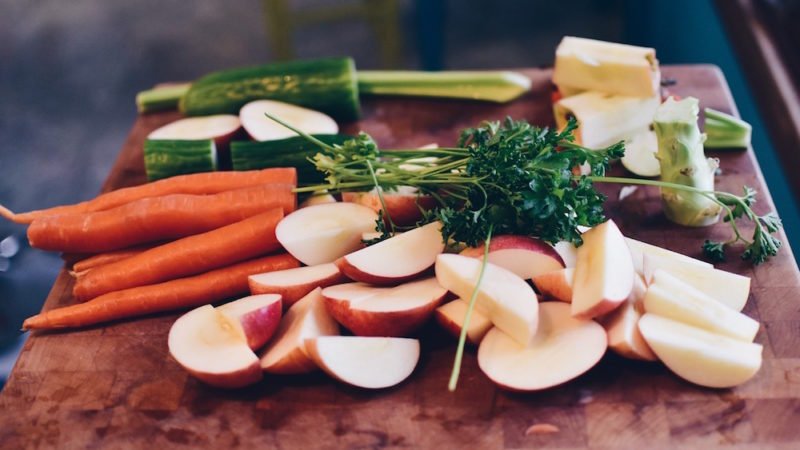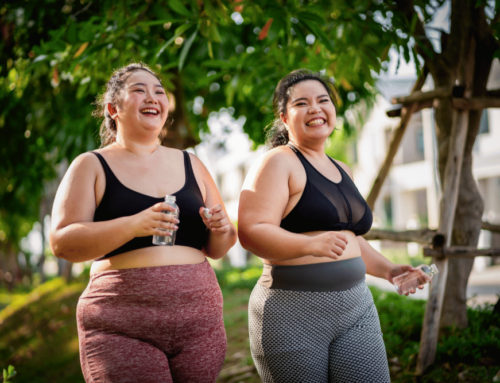 Odds are, you’ve noticed the tagline in this site’s header: “Helping you achieve optimal health and mind-body wellness…one bite at a time.” So what’s that about, exactly?
Odds are, you’ve noticed the tagline in this site’s header: “Helping you achieve optimal health and mind-body wellness…one bite at a time.” So what’s that about, exactly?
It’s about this: Healthy eating is not an all-or-nothing deal. It exists on a spectrum.
Some days will be healthier than others (falling more to one end of the healthy eating spectrum than the other)and that’s OK, because it’s not what you do in any one bite, one meal, one day or one week that makes or breaks the overall healthfulness of your diet, its whether you are, in the long-term, moving toward the healthier end of the spectrum, one bite at a time. And it’s not just the nutritional content of what you put on your fork that matters, it’s also about developing a balanced way of thinking about food.
Avoiding the All-Or-Nothing Trap
One pitfall or trap experienced by many people who are struggling to eat healthy while on a rigid eating plan (read: diet), is that they are prone to falling off the wagon, hard. It’s the “Well, I shouldn’t have eaten that…now that I’ve blown it for today I might as well eat whatever I want” syndrome. I also like to call it “all-or-nothingism.” I’m sure you’ve experienced it. Or have a “friend” who has.
Allow me to introduce Kate and Jane. Kate and Jane arrive at work, grab their water glasses and head to the break room to fill up with the beverage of champions (water has everything you need and nothing you don’t). But, alas, someone has brought in donuts. And not just any donuts…the “good donuts”! Kate and Jane each select a donut to take back to her desk, and here their stories diverge…
It’s Not Just What You Eat, It’s How You Eat It
Kate feels guilty about eating the donut, even while she’s eating it, so she wolfs it down to get it over with. So much for the “perfect eating day” she had planned! At lunch, instead of getting a salad with grilled chicken from the food court, she says “what the heck” and orders a huge burrito, coated with thick layer of cheese, and says “yes” to the chips and salsa. She eats every bite, feeling guilty. That afternoon, she feels grumpy and bloated, so she hits the vending machine to buy a candy bar to cheer herself up.
Jane, on the other hand, enjoys her donut, even though she knows it’s not healthy. The donuts are good quality, otherwise she would have skipped them. But she’s been on track with her eating, and didn’t have any other treats planned, so this will count as a treat. Because it’s a treat, she makes sure to eat it slowly and mindfully! She feels the sugar rush the donut gives her, and thinks, “Wow, that tasted good, but now I remember why I don’t eat much sugar anymore!” At lunch, she gets right back on track with her normal eating, a turkey wrap and a green salad. Mid-afternoon, she eats the apple and almonds she brought from home and has a cup of green tea.
The Descent Into Shame
Kate is tired when she gets home, and is feeling a little low about how she can never seem to follow through on her diets. “I’m such a failure,” is the main theme of the thought loop running in her head. Her guilt has morphed into shame (guilt is about something you do, shame is about something you are). She forgoes the healthy dinner options in her fridge—since today turned into a “eat what I want” day—and makes herself a big bowl of comforting pasta with butter and loads of cheese. Then she has a big bowl of ice cream, instead of the little espresso-cup size she usually allows herself. As she eats while numbing out in front of the TV. So much for mind-body wellness!
Jane, meanwhile, arrives home and pulls out broccoli, peppers, carrots and lean beef to make quick stir-fry. It’s one of her healthy, veggie-loaded go-to dinners, and she can whip up the sauce that goes with it without even looking at the recipe. Delicious and healthy! After dinner, her husband suggests going for a walk to get an ice cream cone. She walks with him but skips the ice cream, since she did have that donut. She knows that, for health and nutrition’s sake, it’s one thing to have a donut or ice cream, but another thing to have both. But really, the main reason she decides to say no to ice cream is that on this particular evening, she can take it or leave it, so she decides to leave it. (She knows there will other opportunities to eat ice cream in her future.)

Progress, Not Perfection
Every meal, snack or bite presents you with a fresh, new opportunity to make a choice that moves you toward optimal health, or away from it.
If you make one less-than-healthful choice, it doesn’t make sense to follow it with a series of unhealthy choices. Look at what Kate and Jane ate in a day. Kate went from a rigidly conceived “perfect eating day” to an unhealthy trainwreck of a day. Jane went from a planned healthy eating day to an actual healthy eating day + one treat. She ate lots of veggies, fruit and lean protein and all the fiber and nutrients that come with it.
If you make an less-than-ideal eating choice, you’ll have a chance to make a more healthful, nourishing one in a few hours. Don’t sweat it, move on, and try to gradually increase the number of times you go with the healthy choice. Keep nudging your way—one bite at a time—toward the healthy end of the spectrum. Good health does not require perfection!






